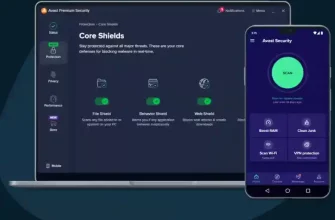Artificial Intelligence in Antivirus Programs
The rapid advancements in technology have led to the integration of artificial intelligence (AI) into various fields, and the realm of cybersecurity is no exception. AI has brought about a new era in antivirus programs by revolutionizing the way digital threats are detected, analyzed, and neutralized. Traditional antivirus software relied on signature-based methods, which required constant updates to identify new threats. However, AI has introduced a more proactive and intelligent approach to cybersecurity.

Companies Leading AI Testing in Antivirus
Several cybersecurity companies have taken the lead in incorporating AI into their antivirus programs, enhancing their capabilities to combat evolving cyber threats. Prominent players in this field include:
- Symantec (Norton): Norton’s antivirus solutions have integrated AI to analyze and predict malware behavior, thereby improving their detection rates.
- Kaspersky: Kaspersky has employed AI algorithms to enhance threat detection and prevention, enabling the software to adapt to new threats more effectively.
- McAfee: McAfee’s use of AI-driven analytics aids in identifying complex threats and patterns, helping users stay ahead of potential attacks.
- Bitdefender: Bitdefender’s antivirus programs leverage AI to detect, block, and remove sophisticated malware, ensuring comprehensive protection.
Challenges Hindering AI Integration into Antivirus
While the potential benefits of integrating AI into antivirus programs are immense, there are several challenges that hinder the seamless implementation of this technology:
- Resource Intensity: AI-driven antivirus programs often require significant computational resources, potentially affecting system performance.
- False Positives and Negatives: Teaching AI models to accurately differentiate between benign and malicious behavior is complex, leading to occasional false positives or negatives.
- Adaptation to New Threats: Rapidly evolving cyber threats demand AI models that can adapt and learn quickly, a task that poses challenges in staying ahead of emerging attack techniques.
- Privacy Concerns: Some AI-powered antivirus systems may require sending data to cloud servers for analysis, raising concerns about user privacy and data security.
First AI Release in Antivirus Software
The first notable release of AI in antivirus software occurred around the mid-2010s. As AI technology matured, cybersecurity companies began incorporating machine learning and neural networks to improve threat detection accuracy. These early attempts laid the foundation for the AI-driven antivirus solutions we see today. This marked the beginning of a paradigm shift in cybersecurity, moving away from relying solely on known threat signatures to utilizing AI’s predictive capabilities.
In conclusion, the integration of artificial intelligence into antivirus programs has brought about a transformative shift in the field of cybersecurity. Companies like Symantec, Kaspersky, McAfee, and Bitdefender have taken the lead in harnessing AI’s potential to enhance threat detection and prevention. However, challenges such as resource intensity, false positives, and adaptation to new threats persist, underscoring the need for ongoing research and development in this area. The mid-2010s marked the initial release of AI-driven antivirus software, setting the stage for the evolution of smarter, more efficient cybersecurity solutions in the years to come.







